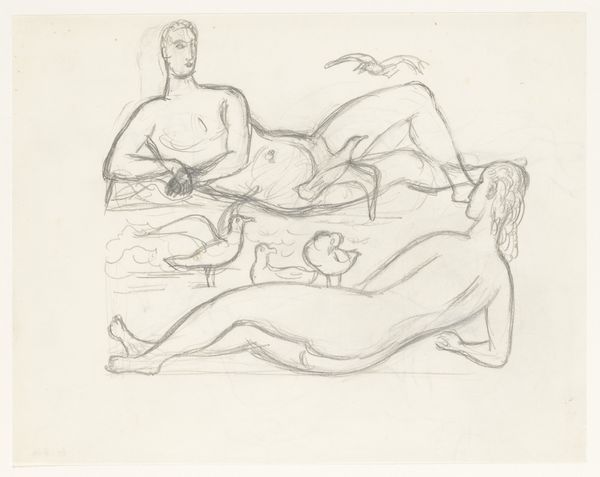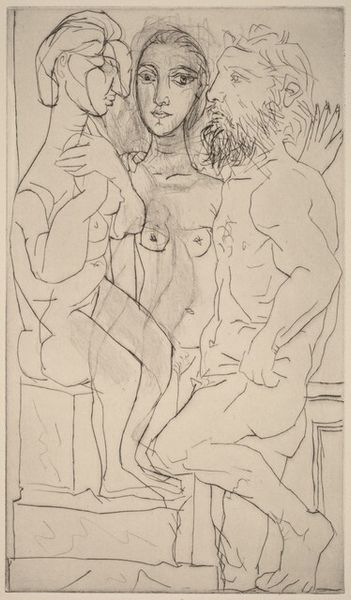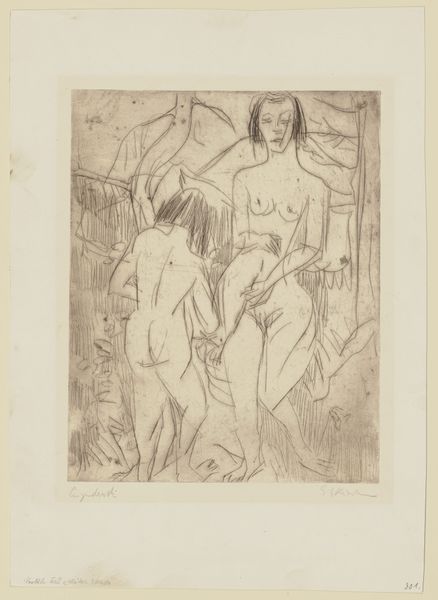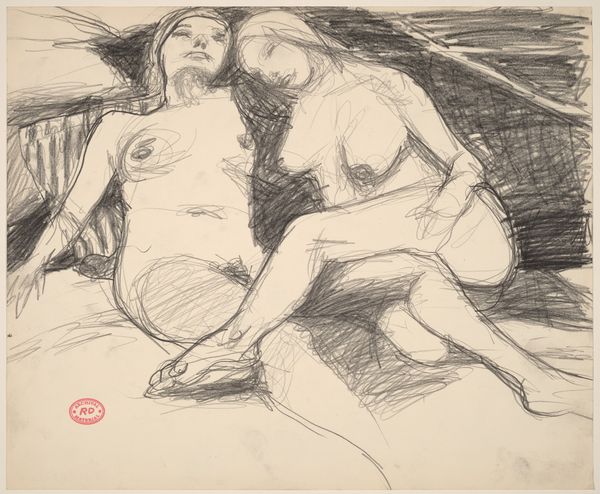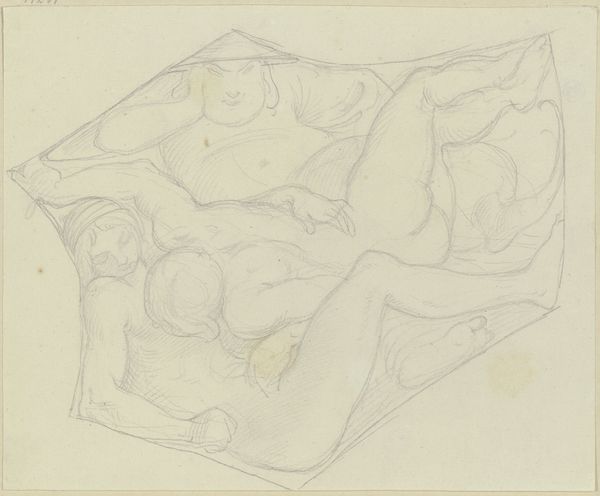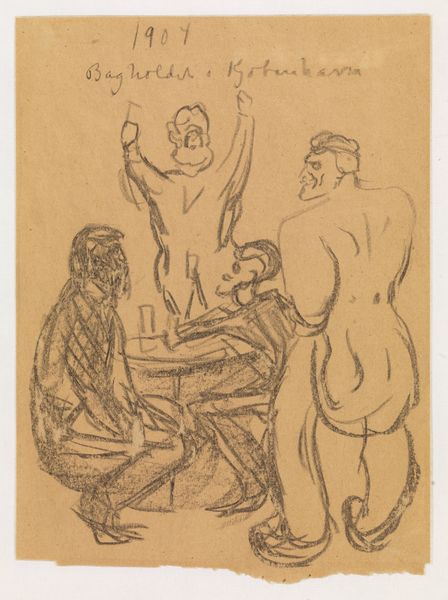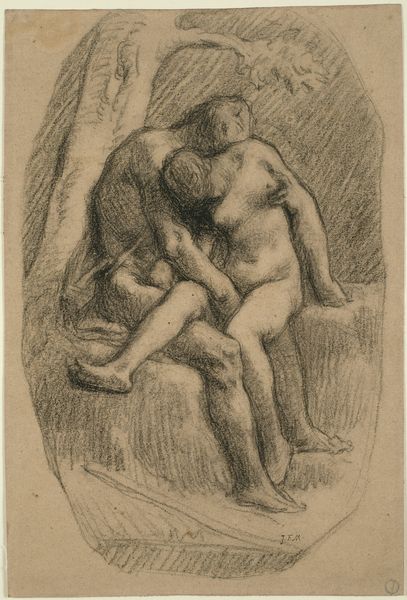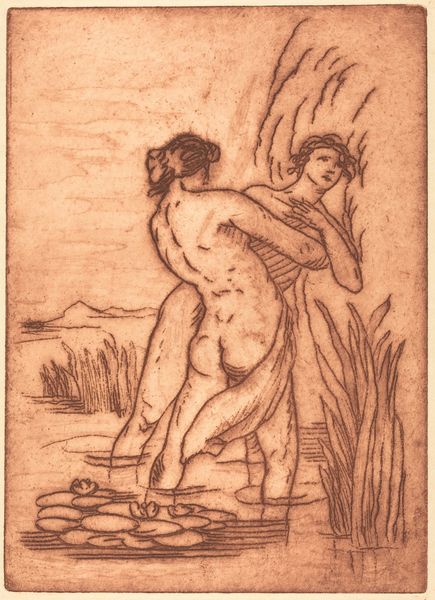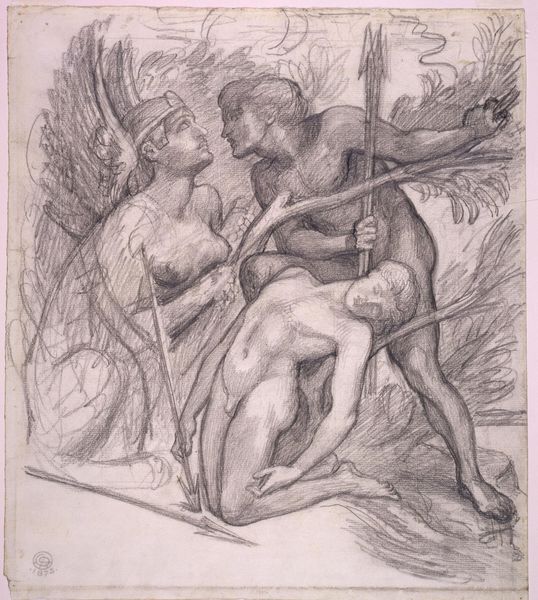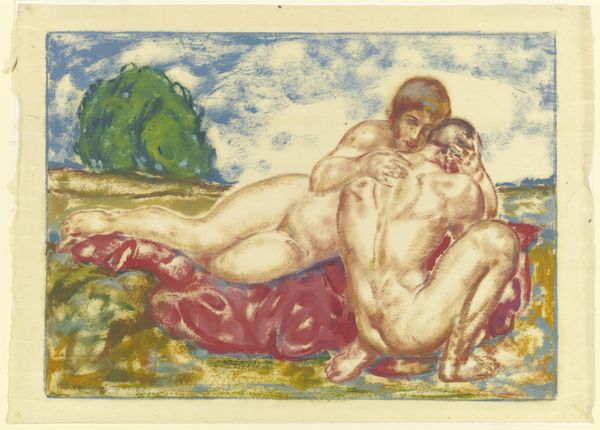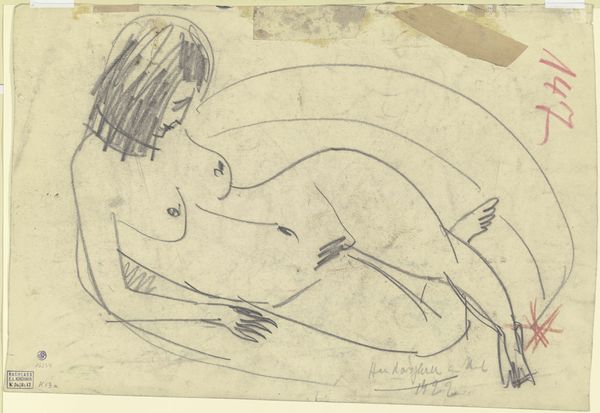
drawing, print, etching, paper
#
drawing
#
narrative-art
# print
#
etching
#
figuration
#
paper
#
pencil drawing
#
symbolism
#
history-painting
#
nude
Dimensions: 260 × 324 mm (plate); 284 × 380 mm (sheet)
Copyright: Public Domain
Editor: Here we have Aristide Maillol’s "Adam and Eve," an etching from 1895. There's a certain heaviness to it; a stillness that feels almost burdened. What do you see in this piece? Curator: I see a deliberate subversion of traditional narratives. Instead of focusing on the moment of temptation or expulsion, Maillol presents Adam and Eve in quiet contemplation. It prompts us to question the conventional framing of these figures as symbols of sin and obedience. What if their story is not about transgression, but about the beginning of human consciousness? Editor: So you see the quietness as potentially defiant? Curator: Precisely! Maillol made this at a time of intense social change, particularly regarding views on sexuality and women's roles. Consider how frequently Eve is blamed; is this work perhaps asking us to re-evaluate her position in this canonical tale? Does Maillol’s Eve represent female agency in a period grappling with rapidly evolving gender dynamics? Editor: It's interesting you focus on Eve's agency, given the somewhat passive composition of the two figures. I guess I was initially interpreting that stillness as resignation, not agency. Curator: It’s a valid observation. Perhaps the figures embody the weight of new knowledge and responsibility, the struggle for self-definition outside established norms. And the artist's focus on form and the nude body recalls a broader tradition within Western art, doesn't it? Editor: It does... but is Maillol’s aesthetic choice furthering or questioning that tradition by portraying Adam and Eve this way? Curator: A brilliant question! By stripping the story down to its bare figures, set in an unadorned Eden, he avoids moralising the figures. Editor: I hadn’t thought about it that way. I see it now—Maillol reframes the story and offers them dignity, not damnation. Curator: Absolutely, and that shift encourages a more empathetic reading, pushing beyond received interpretations of this pivotal biblical scene.
Comments
No comments
Be the first to comment and join the conversation on the ultimate creative platform.
